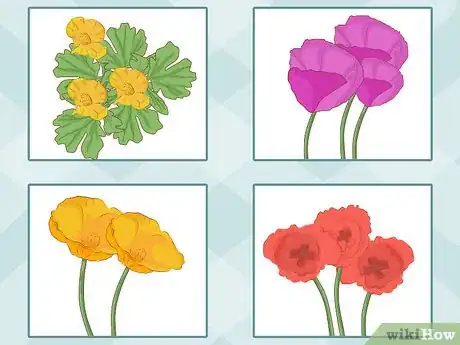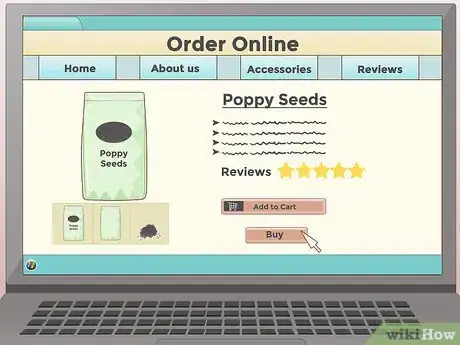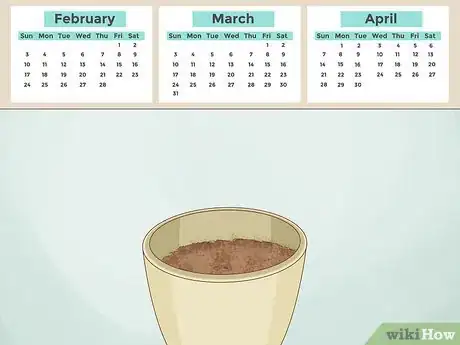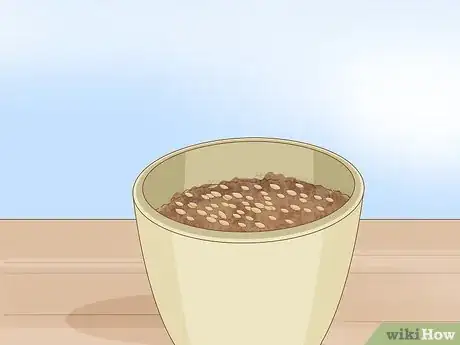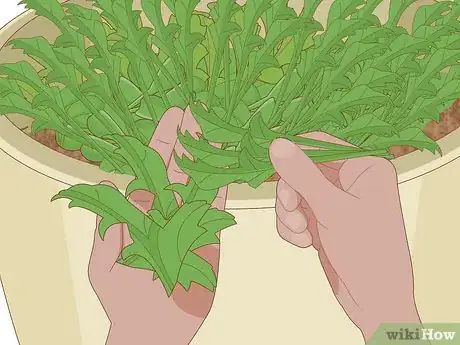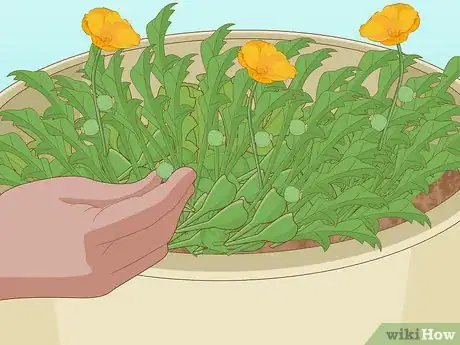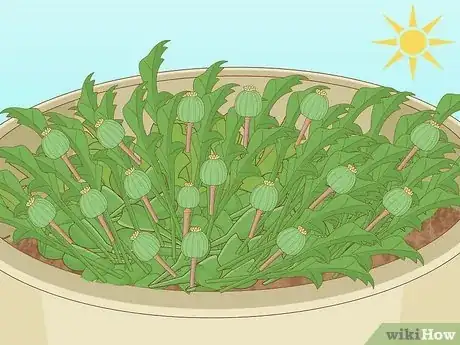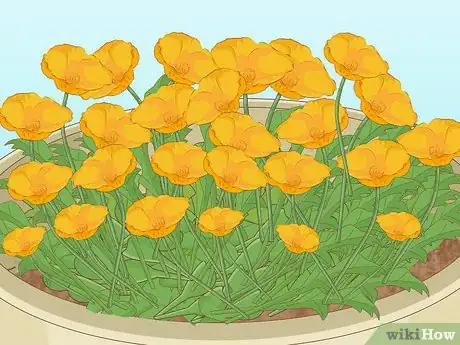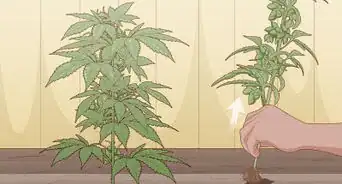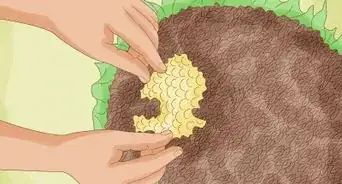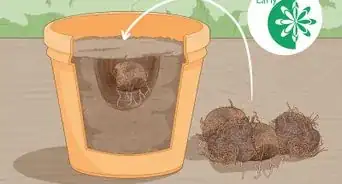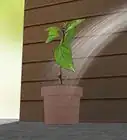This article was co-authored by Katie Gohmann. Katherine Gohmann is a Professional Gardener in Texas. She has been a home gardener and professional gardener since 2008.
wikiHow marks an article as reader-approved once it receives enough positive feedback. This article received 11 testimonials and 93% of readers who voted found it helpful, earning it our reader-approved status.
This article has been viewed 246,885 times.
Graceful, sunset-hued poppies add a whimsical element to any garden. Just like with any flower, growing from seed is a process that requires patience, attention, and work. Prepare, plant, and sow the seeds and then take good care of your poppies to ensure that you’ll have a garden popping with bright colors.
Steps
Preparing to Plant the Seeds
-
1Choose a poppy variety. There are many different poppy varieties - some native to the United States, others native to regions across the world. While all poppies have colorful, papery petals and a slightly wild, weedy appearance, they also have striking differences when it comes to caring for them.[1] Choose a variety that works best in your growing region and the conditions in your garden.[2]
- California poppies grow best in USDA zones 9 - 11, the dry western regions of the US. They are easy to care for and do well in infertile soil.
- Purple poppy mallow is another variety that grows best in infertile soil, but this one grows best in zones 4 through 8.
- Corn poppies, on the other hand, need rich, fertile, wet soil to grow well.
- Celandine poppies are woodland flowers that grow best in the east, zones 4 through 8.
- Go to http://planthardiness.ars.usda.gov/PHZMWeb/, type your zip code in, and press the red “find” button to figure out what zone you’re in.
-
2Source your seeds. Poppies do not transplant well, so you'll need to buy your own seeds rather than purchasing sprouted seedlings. Common poppy seeds are available in every garden store, but if you want unique varieties, check online for more options. Purchase poppy seeds from a reputable source so they'll be likely to germinate and grow healthy.Advertisement
-
3Determine where to plant them. Most poppy varieties grow best in full sun, and can really be planted anywhere without too much shade. You can plant them along the borders of your yard, in a window box or in a chosen spot in your garden. Make sure the soil quality in the spot you choose matches the needs of your poppy.
- If you have a variety that does well in infertile soil, you're in luck - you don't have to add anything to your soil to get it ready. Many poppies grow perfectly well in rocky terrain that doesn't support other types of flowers as well.
- For varieties that require rich soil, till the soil and mix in rich compost or bone meal to add the nutrients your poppies need to thrive.
Sowing Seeds and Caring for Poppies
-
1Sow the seeds in spring or fall. Poppy seeds require a period of stratification in order to germinate. That means they need to be exposed to cold or frost before they'll sprout. It's usually a safe bet to sow poppy seeds in very early spring, while there's still a good chance of frost. If you're in an area with mild winters, sow the seeds in the fall, so they get plenty of exposure to cooler temperatures before the weather warms up in the spring. After 14 to 28 days, the seeds will begin their germination, sending up shoots.
-
2Loosen the dirt in the planting area. Poppies are sown on the surface, rather than buried in holes. To prepare the soil, simply loosen its surface a bit with a garden rake. There's no need to till it to a depth of more than an inch or so, if that. In fact, doing so may make it more difficult for your poppies to grow.
-
3Sow the seeds. Sprinkle them over the freshly loosened dirt. In nature, poppies drop their seeds, which are small enough to easily be scattered across the ground by the wind. In this spirit, scatter the seeds and let them fall where they may, rather than trying to plant the poppies in rows. It will be difficult to keep the seeds confined to the spot where you drop them.
-
4Water the seeds. Keep the area moist by sprinkling water over the soil. Don't soak it, though, or you may drown the delicate seeds. The seedlings will sprout when the weather warms in the spring.[3]
-
5Thin out the poppies. Thinning helps the plants to get bigger and produce more flowers. To thin it is a good idea to cut the plant tops off that you are thinning with scissors so not to disturb the remaining poppies roots. When you see them sprout, you can thin out the poppies to allow each plant a bit of room to grow. Different varieties will come with different instructions as to how much spacing they need. This step isn't totally necessary, but it can give you more control over the final appearance of your flower bed.
-
6When they start to flower, remove buds to ensure that they keep producing blooms. They do well in poor soil that other plants may not be able to survive in.
-
7When summer comes, let the seed pods develop. The blooms will fall off and the pods will remain. You can harvest these to plant next season. Some varieties even produce edible seeds you can use to make treats such as poppy seed muffins.
-
8Water your poppies sparingly once they’re established. Most poppies don’t need much water once they have grown in a bit. In fact, over watering can create leggy, unattractive growth.[4]
- Water your poppies moderately and regularly when they’re in bloom or are almost in bloom.
- After the flowering period, only water your poppies when the top inch of soil is dry to the touch.[5]
Expert Q&A
Did you know you can get expert answers for this article?
Unlock expert answers by supporting wikiHow
-
QuestionWill I get a poppy flower the same year I spread seeds on the ground?
 Katie GohmannKatherine Gohmann is a Professional Gardener in Texas. She has been a home gardener and professional gardener since 2008.
Katie GohmannKatherine Gohmann is a Professional Gardener in Texas. She has been a home gardener and professional gardener since 2008.
Professional Gardener
-
QuestionHow often do you water poppy seeds until they sprout?
 Katie GohmannKatherine Gohmann is a Professional Gardener in Texas. She has been a home gardener and professional gardener since 2008.
Katie GohmannKatherine Gohmann is a Professional Gardener in Texas. She has been a home gardener and professional gardener since 2008.
Professional Gardener
-
QuestionCan I plant pods directly into the ground?
 Community AnswerNo. Poppies need to be sown on the surface, if not in a container where the seeds are folded onto lightly wet paper towel and placed in the fridge for 14 to 29 days.
Community AnswerNo. Poppies need to be sown on the surface, if not in a container where the seeds are folded onto lightly wet paper towel and placed in the fridge for 14 to 29 days.
References
- ↑ http://homeguides.sfgate.com/soil-poppy-flower-like-grow-in-69779.html
- ↑ http://planthardiness.ars.usda.gov/PHZMWeb/
- ↑ http://www.waysidegardens.com/wg-growing-poppies/a/336/
- ↑ https://www.gardeningknowhow.com/ornamental/flowers/poppy/growing-poppy-flowers.htm
- ↑ http://balconygardenweb.com/growing-poppies-in-pots-care-how-to-grow-poppies-in-containers/
About This Article
To plant poppy seeds, start by getting your plot ready in very early spring, since poppy seeds need exposure to cold or a frost to germinate. Look for a spot that gets full sun, and prepare it by using a rake to just loosen the top soil. Then, sprinkle the seeds over the loose soil. Next, water the soil, being careful to make it moist without soaking it. When your poppies start to sprout, thin them out so each plant has room to grow. Then, when your poppies flower, remove their buds so they’ll continue to produce blooms. For information from our Horticulturist reviewer on how to choose which poppy variety to plant, read on!
